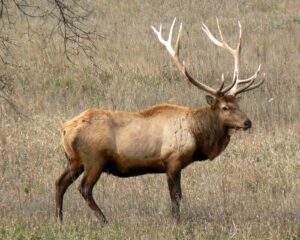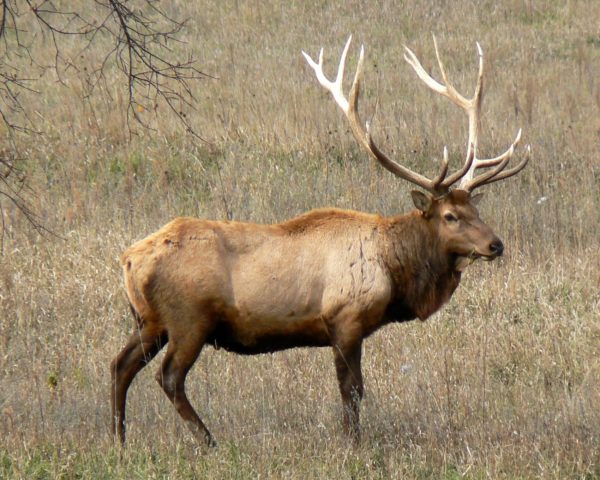Jackson Hole Wildlife, Part 5: Elk

Welcome to the next installment of our wildly (get it?) popular series Wildlife of Jackson Hole! This week’s entry has a special place in our Flat Creek hearts, since they live in a giant refuge right across the street from us: the elk!

LATIN NAME: Cervus elaphus
What’s an elk’s social life like?
Elk are social animals and live in large herds, as we in Jackson can attest. Herds can range up to 200 or even 400 members—or, if they’re the Jackson Hole Elk Refuge herd, they hang out in a group of 1,100. Like a bunch of awkward teenagers at a middle school dance, elk herds are often segregated by gender. Herds are matriarchal, which means they’re run by a single old female, which is pretty progressive of them. Way to shatter that glass ceiling, elk.
What about the babies?
Elk babies are called calves and weigh up to 35 pounds when they’re born. They can stand after just 20 minutes, which makes you wonder why human babies are such slackers. (Get your act together and stand already, human babies. You’re embarrassing us in front of the other animals.) After a couple of weeks, the calf will join the herd. To defend against the threat of predators, calves are born spotted and scentless, which helps them become invisible to hostile eyes and noses.
Do they have antlers?
Um, did you miss the picture above? Yes, the males do. They shed the antlers every year, selflessly thinking of the aesthetics of Jackson’s famous elk antler arches. New antlers are covered in a fuzzy skin called velvet, but by early fall they’re solid bone. They’re not light, either—a set of antlers can weigh up to 40 pounds.
Can elk count?
That's a weirdly specific question, almost like we were looking for an excuse to share this fact, but yes—apparently, they can. At least to ten. Scientists have noticed that when presented with the choice between a mate with nine antler points and another with ten, she will almost always pick the one with ten. We just think they're shallow.
Can I hunt them?
Yes. As the Elk Refuge website points out, managing the size of the herd is an important task that hunters can help with. Find out more here.
What else should I know about them?
- The Shawnee name for elk is “wapiti,” which means “white rump.”
- An elk’s top two canine teeth are called “ivories.” It’s believed these are what’s left of saber-like tusks left over from modern elk’s distant ancestors. These terrifying prehistoric elk may have used their massive canines to fight.
- An elk’s stomach has four chambers. The first one stores food, while the other three do the digestion.
Not sure if we’ve mentioned this yet, but there’s no better place to see the elk than from Flat Creek Inn, right across the street from the Elk Refuge. Book with us today!
Read previous posts in this series here: bald eagle, bear, wolf.

